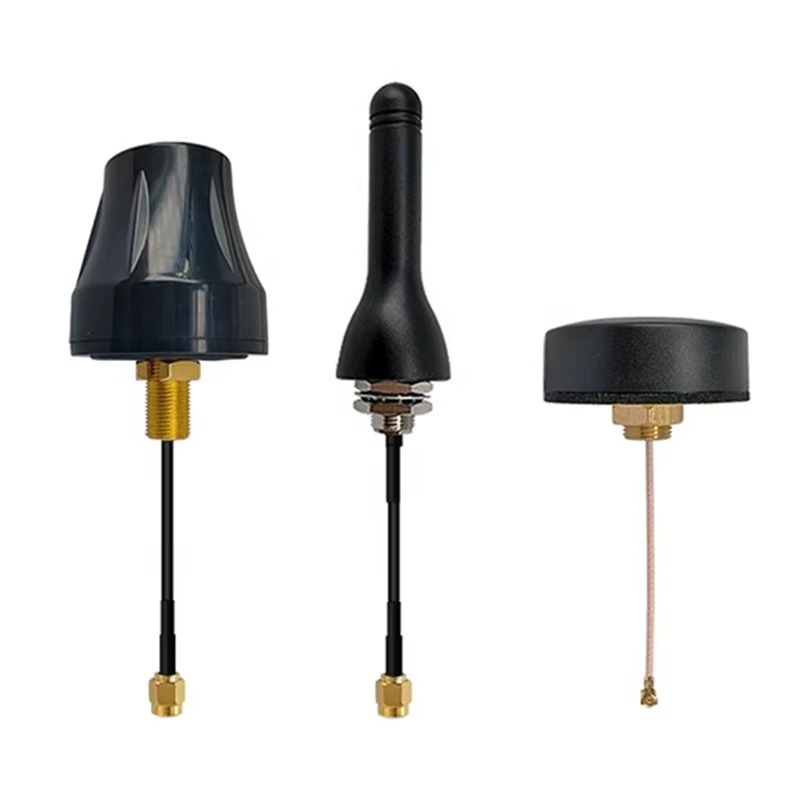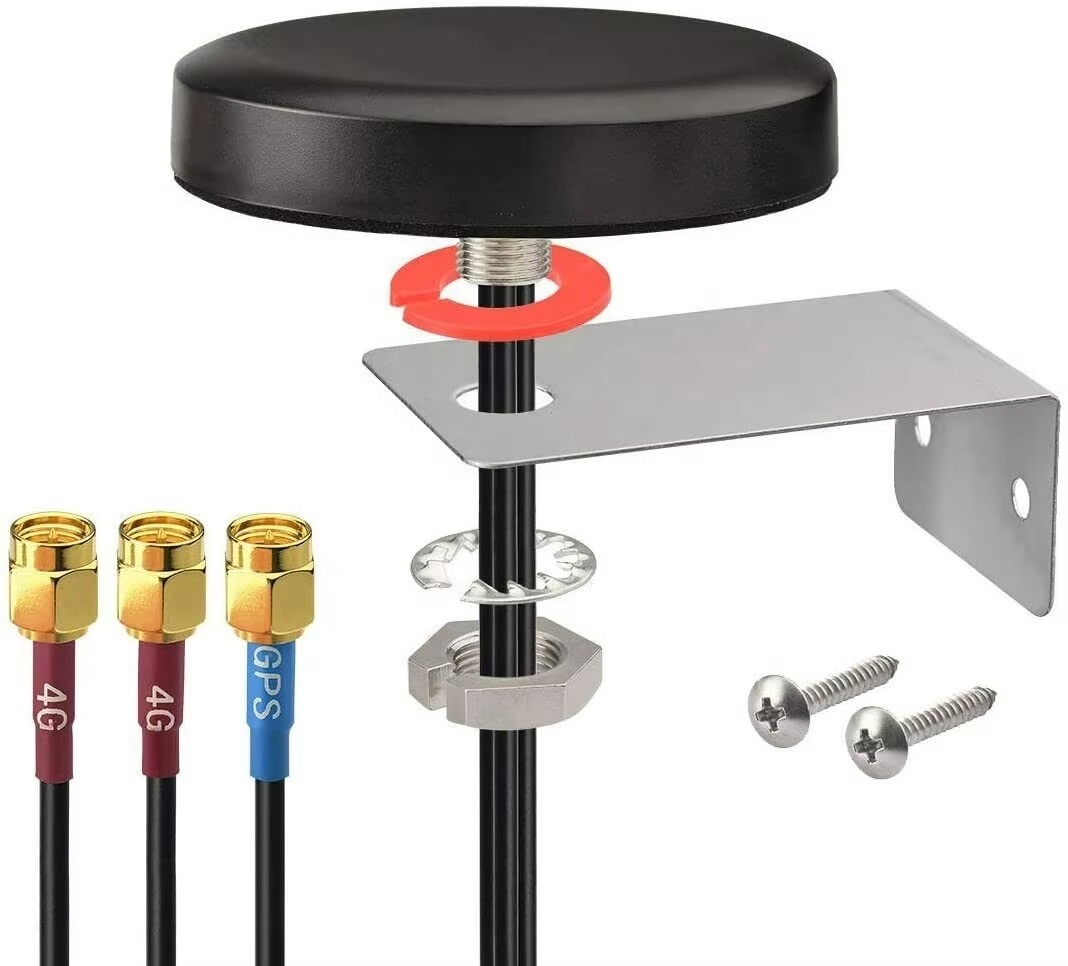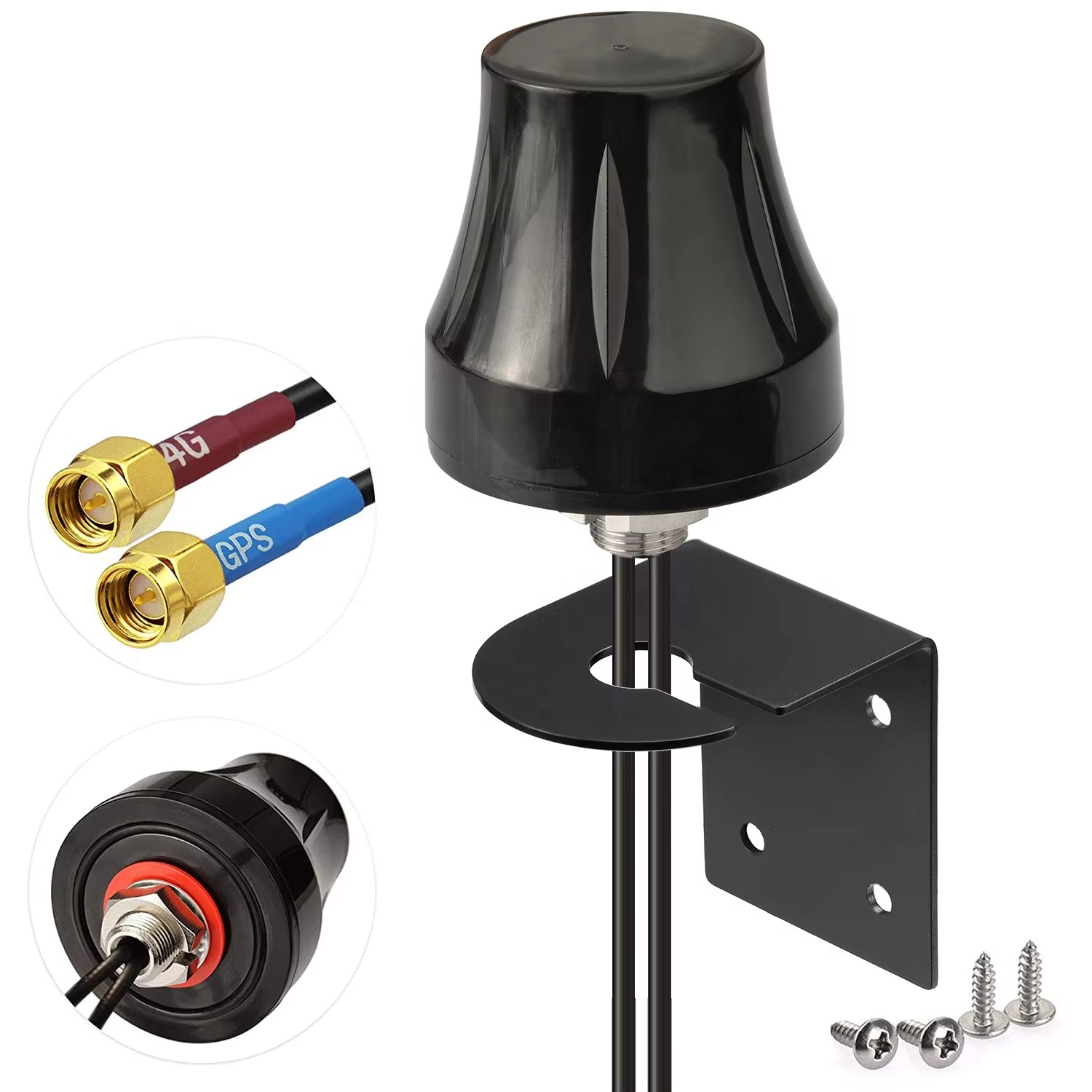8mm low-profile ceramic antennas have become a preferred choice for miniaturized electronic devices due to their unique combination of size, performance, and durability. However, like any technology, they also face challenges that limit their applicability in certain scenarios. Below is a detailed analysis of their key advantages and the challenges that designers, manufacturers, and users must address:
4.1 Advantages: Why 8mm Low-Profile Ceramic Antennas Stand Out
4.1.1 Ultra-Compact Size for Miniaturized Devices
The most significant advantage of 8mm low-profile ceramic antennas is their ultra-thin design, with a height of 8mm or less. This makes them ideal for devices with extreme space constraints, such as smartwatches (which typically have internal heights of 5–10mm), wireless earbuds (even smaller, with internal spaces measured in millimeters), and miniaturized IoT sensors (often embedded in tight spaces like industrial machinery or medical devices).
Unlike traditional antennas—such as whip antennas (which require several centimeters of height) or large patch antennas (which may be 10–15mm thick)—8mm low-profile ceramic antennas can be mounted directly on the PCB without occupying valuable vertical space. This allows device manufacturers to create sleeker, lighter products that meet consumer demand for compact, portable electronics. For example, a smartwatch manufacturer can use an 8mm ceramic BLE antenna to enable wireless connectivity without increasing the watch’s thickness, maintaining a slim, comfortable design that users prefer.
The compact size also enables multi-antenna integration in a single device. Many modern devices require multiple antennas to support different wireless technologies—e.g., a smartwatch may need a BLE antenna for syncing with a smartphone, a GNSS antenna for location tracking, and a Wi-Fi antenna for software updates. 8mm low-profile ceramic antennas are small enough to be placed side-by-side on the PCB, each dedicated to a specific frequency band, without interfering with each other or other components like batteries or displays.
4.1.2 High Performance in a Small Form Factor
Despite their small size, 8mm low-profile ceramic antennas deliver exceptional performance—a feat made possible by the unique electrical properties of ceramic materials. Their high dielectric constant (εr) allows for efficient signal propagation in a compact design, while their low loss tangent (tanδ) minimizes signal loss, ensuring that most of the electrical energy is converted to electromagnetic waves (and vice versa).
Key performance metrics that highlight this advantage include:
Radiation Efficiency: As mentioned earlier, 8mm low-profile ceramic antennas typically achieve radiation efficiencies of 60–80% for BLE/Wi-Fi and 50–70% for GNSS. This is significantly higher than other compact antenna technologies, such as printed antennas on flexible PCBs (which may have efficiencies as low as 30–40%) or chip antennas made from plastic substrates (which suffer from higher signal loss). For low-power devices like IoT sensors (which operate on small batteries), this high efficiency is critical—it means the device can transmit data over longer distances with less energy, extending battery life.
Signal Strength and Range: The high efficiency of these antennas translates to stronger signal strength and longer communication ranges. For example, an 8mm ceramic BLE antenna can typically communicate over a range of 10–30 meters (depending on the environment), compared to 5–15 meters for a plastic-based chip antenna of the same size. This extended range is valuable for applications like industrial IoT, where sensors may be placed in large factories and need to transmit data to a central hub located far away.
Frequency Stability: Ceramic materials have excellent thermal stability, meaning their dielectric constant and loss tangent change minimally over a wide temperature range (-40°C to +85°C, or even wider for specialized ceramics). This ensures that the antenna’s resonant frequency (the frequency at which it operates most efficiently) remains stable, even in extreme environments. For example, an 8mm ceramic GNSS antenna used in a medical device that undergoes sterilization (exposed to high temperatures and pressure) will maintain its performance, whereas a plastic-based antenna may shift its resonant frequency and lose efficiency.
4.1.3 Durability and Environmental Resistance
Ceramic materials are inherently durable and resistant to environmental factors, making 8mm low-profile ceramic antennas suitable for harsh or demanding applications. Unlike plastic-based antennas, which can degrade over time due to UV radiation, moisture, or chemical exposure, ceramic antennas are highly resistant to these elements.
Key durability features include:
Mechanical Strength: Ceramics like alumina and zirconia have high mechanical strength and hardness (alumina has a Mohs hardness of 9, second only to diamond). This makes the antenna resistant to scratches, impacts, and bending—critical for wearables that are subjected to daily use (e.g., a fitness tracker worn during workouts) or industrial sensors that may be exposed to vibrations or physical contact with machinery.
Moisture and Chemical Resistance: Ceramic is non-porous and impermeable to moisture, preventing water from seeping into the antenna and damaging the conductive elements. It is also resistant to most chemicals, including oils, solvents, and cleaning agents—making it ideal for medical devices that require frequent sterilization (using chemicals like ethanol or hydrogen peroxide) or industrial sensors exposed to lubricants or coolants.
UV and Thermal Resistance: Ceramic materials do not degrade when exposed to UV radiation (unlike plastic, which can become brittle and crack over time). They also have high thermal conductivity and resistance to thermal shock, meaning they can withstand rapid temperature changes without breaking. For example, an 8mm ceramic antenna used in an outdoor IoT sensor (exposed to sunlight, rain, and temperature fluctuations between day and night) will maintain its performance for years, whereas a plastic antenna may need to be replaced every few months.
4.1.4 Easy Integration with PCB Manufacturing
8mm low-profile ceramic antennas are designed as surface-mount devices (SMDs), which means they can be integrated seamlessly into standard PCB manufacturing processes. This is a major advantage for device manufacturers, as it eliminates the need for specialized assembly steps or tools, reducing production costs and time.
The integration process is straightforward:
Placement: The antenna is placed on the PCB using automated pick-and-place machines (the same machines used to place other SMD components like resistors, capacitors, or ICs). This ensures precise alignment with the PCB’s feed and ground pads.
Soldering: The antenna is soldered to the PCB using standard reflow soldering techniques (heating the PCB to a temperature of 220–260°C, depending on the solder type). The gold-plated terminals on the antenna ensure a reliable solder joint that resists corrosion over time.
Testing: After soldering, the antenna’s performance can be tested using automated equipment (e.g., VNAs) to ensure it meets specifications. This integration into existing manufacturing workflows means that manufacturers do not need to invest in new equipment or retrain their staff to incorporate 8mm low-profile ceramic antennas into their devices.
4.2 Challenges: Limitations and Considerations
4.2.1 Sensitivity to PCB Layout and Ground Plane Design
One of the biggest challenges with 8mm low-profile ceramic antennas is their sensitivity to the surrounding PCB environment, particularly the ground plane design and the placement of other components. Unlike larger antennas, which are less affected by nearby components, the small size of 8mm ceramic antennas means that even minor changes to the PCB layout can significantly impact their performance.
Key layout-related challenges include:
Ground Plane Requirements: As mentioned earlier, 8mm low-profile ceramic antennas require a dedicated ground plane on the PCB to optimize performance. The size and shape of this ground plane are critical—too small, and the antenna’s efficiency drops; too large, and it may interfere with other components. For example, a chip-style 8mm ceramic antenna may require a ground plane of 10mm x 10mm, but if the PCB designer only allocates 8mm x 8mm, the antenna’s radiation efficiency could drop from 70% to 40%. This requires PCB designers to carefully follow the manufacturer’s layout guidelines, which can add complexity to the design process.
Component Placement Interference: The antenna’s performance can be degraded by nearby components that emit electromagnetic noise (e.g., processors, power management ICs, or batteries) or that are made of conductive materials (e.g., metal shields or connectors). For example, placing a processor within 5mm of an 8mm ceramic BLE antenna can cause interference, reducing the antenna’s signal strength and range. This means that PCB designers must allocate a "keep-out zone" around the antenna (typically 3–5mm) where no noisy or conductive components are placed—something that can be challenging in devices with extremely tight space constraints.
Signal Reflection from PCB Edges: If the antenna is placed too close to the edge of the PCB, the electromagnetic waves radiated by the antenna can reflect off the PCB edge, causing interference and distorting the antenna’s radiation pattern. This is particularly problematic for omnidirectional antennas, as it can create "dead zones" where signal strength is significantly reduced. To avoid this, the antenna must be placed at least 2–3mm away from the PCB edge—a requirement that can be difficult to meet in very small devices (e.g., wireless earbuds with PCBs smaller than 10mm x 10mm).
4.2.2 Limited Frequency Band Flexibility
8mm low-profile ceramic antennas are typically tuned to specific frequency bands (e.g., 2.4GHz for BLE, 1575.42MHz for GPS L1) and are not easily reconfigurable to support multiple bands or wide frequency ranges. This is because the antenna’s resonant frequency is determined by the size and shape of the radiating element, the dielectric constant of the ceramic substrate, and the thickness of the substrate—all of which are fixed during manufacturing.
While dual-band or multi-band 8mm ceramic antennas are available (e.g., supporting both 2.4GHz BLE and 5GHz Wi-Fi, or GPS L1 and GLONASS G3), they are more complex to design and manufacture. These antennas require intricate radiating element patterns (e.g., slots or notches) to enable resonance at multiple frequencies, which increases production costs and may reduce performance at each individual band. For example, a dual-band 8mm ceramic antenna supporting 2.4GHz and 5GHz may have a radiation efficiency of 60% at 2.4GHz and 55% at 5GHz, compared to 70% for a single-band 2.4GHz antenna of the same size.
This limited flexibility is a challenge for devices that require support for a wide range of frequency bands (e.g., smartphones, which need to support multiple cellular bands, Wi-Fi, Bluetooth, and GNSS). In such cases, multiple 8mm ceramic antennas may be required—one for each band—which can increase the PCB space required and the overall cost of the device.
4.2.3 Higher Cost Compared to Plastic-Based Alternatives
While 8mm low-profile ceramic antennas offer superior performance and durability, they are also more expensive to manufacture than plastic-based chip antennas or printed antennas. This higher cost is due to several factors:
Ceramic Material Costs: High-quality ceramics like alumina or zirconia are more expensive than plastics (e.g., ABS or polycarbonate). The raw materials for ceramic substrates can cost 2–5 times more than plastic substrates of the same size.
Manufacturing Complexity: The production of ceramic substrates involves complex processes like tape casting and high-temperature sintering (1400–1600°C), which require specialized equipment and consume more energy than plastic injection molding or PCB printing. The deposition of conductive elements (e.g., screen printing with silver paste or sputtering) also adds to the cost, as silver and copper are more expensive than the conductive inks used for printed antennas.
Quality Control Costs: The rigorous testing required to ensure the antenna’s performance (e.g., VNA testing, environmental testing) adds to the overall cost. For high-volume production, these tests are automated, but they still represent an additional expense compared to plastic-basedantennas (which may only require basic visual inspection and simple electrical tests).
This higher cost can be a barrier for low-cost devices, such as disposable IoT sensors (used for short-term monitoring of temperature or humidity in shipping containers) or budget-friendly wearables (e.g., entry-level fitness trackers). For these applications, manufacturers may opt for cheaper plastic-based antennas, even if they offer lower performance and durability, to meet price targets. However, for high-end devices (e.g., premium smartwatches, medical wearables, or industrial sensors with long lifespans), the higher cost of 8mm low-profile ceramic antennas is often justified by their superior performance and reliability—they reduce the risk of device failure and the need for costly replacements.
4.2.4 Brittleness of Ceramic Materials
While ceramic materials are durable, they are also brittle—a property that can make 8mm low-profile ceramic antennas vulnerable to damage during handling, assembly, or use. Unlike plastic, which can bend or deform without breaking, ceramic will crack or shatter if subjected to excessive force or impact.
This brittleness poses challenges in several scenarios:
Manufacturing and Assembly: During PCB assembly, automated pick-and-place machines must handle the antennas with extreme care. If the machine’s vacuum pressure is too high or the antenna is dropped onto the PCB, it can crack. Similarly, during reflow soldering, rapid temperature changes can create thermal stress in the ceramic, leading to microcracks that may not be visible immediately but can degrade performance over time.
Device Use and Handling: In wearable devices that are subjected to daily wear and tear (e.g., a smartwatch worn during sports), the antenna may be exposed to impacts (e.g., the watch being dropped on a hard surface) or bending (e.g., the user’s wrist flexing). These forces can cause the ceramic antenna to crack, resulting in signal loss or complete failure of the device’s wireless functionality.
Repair and Maintenance: If a device with an 8mm low-profile ceramic antenna needs to be repaired, replacing the antenna is more challenging than replacing a plastic-based antenna. The brittle ceramic can easily break during removal, and the new antenna must be soldered with precision to avoid damage. This increases the cost and complexity of repairs, which can be a concern for devices that require long-term maintenance (e.g., industrial sensors or medical devices).
Manufacturers address this challenge by adding protective coatings (e.g., epoxy resin or rubber) to the antenna’s surface, which absorb some of the impact and reduce the risk of cracking. They also provide strict handling guidelines to PCB assemblers, such as limiting the force applied during pick-and-place and controlling the temperature ramp rate during reflow soldering. However, these measures can only mitigate the risk—they cannot eliminate the inherent brittleness of ceramic materials.




































































 Language
Language
 En
En Cn
Cn Korean
Korean

 Home >
Home > 







 18665803017 (Macro)
18665803017 (Macro)













